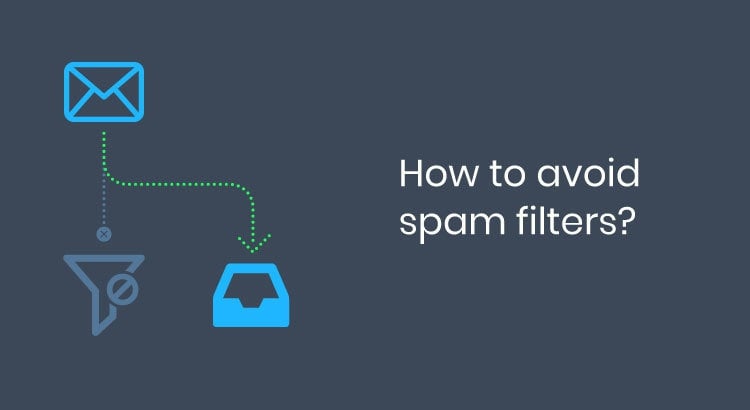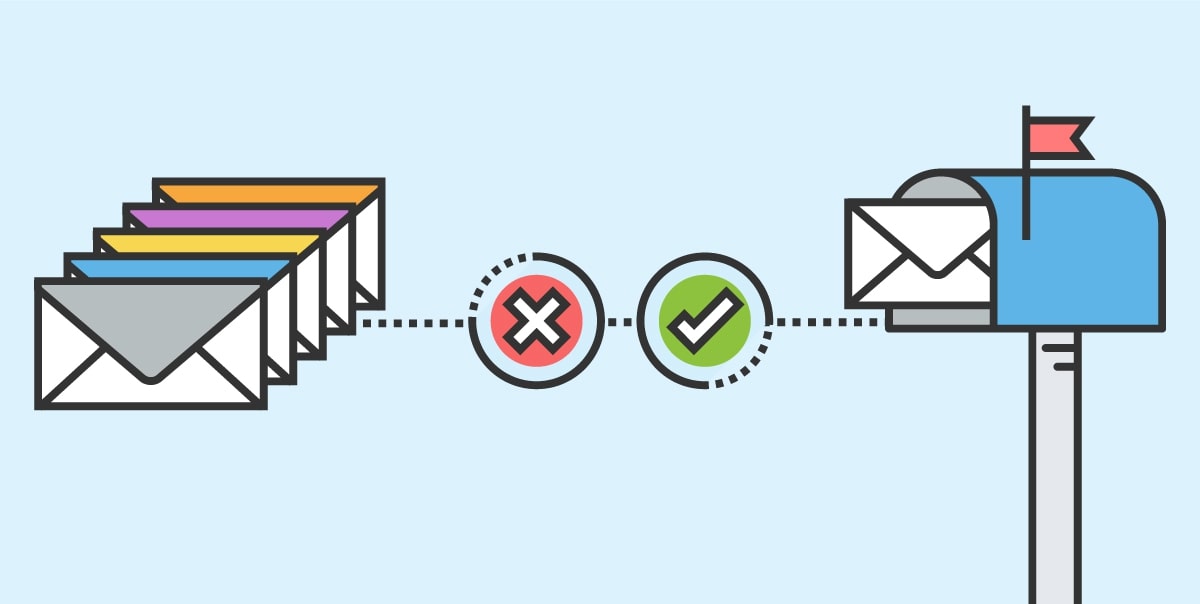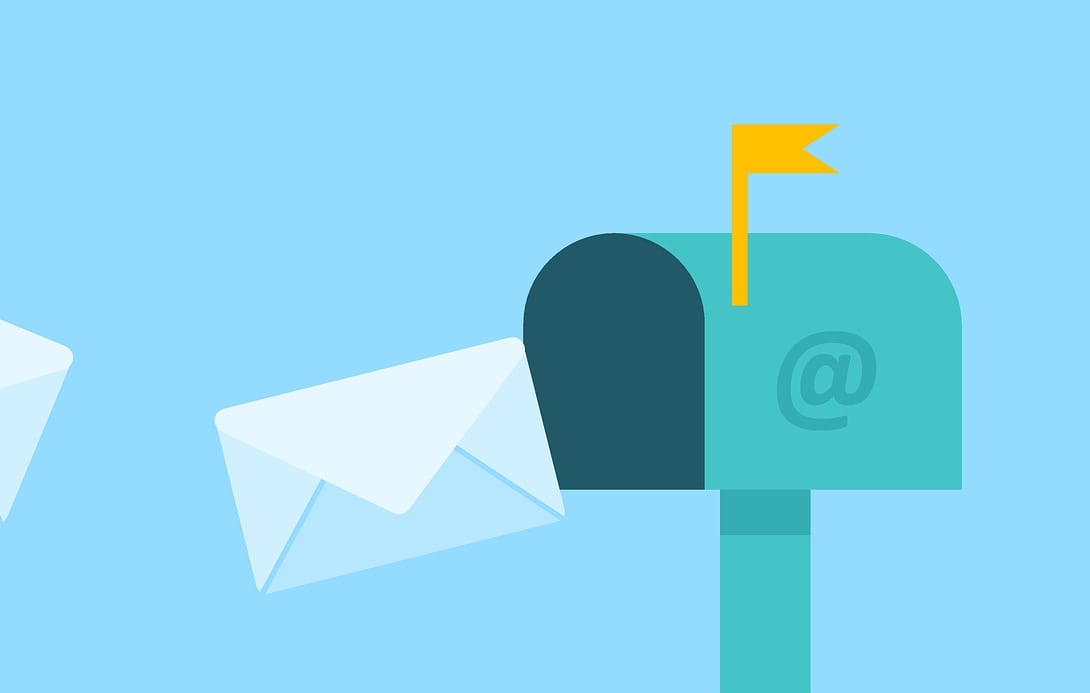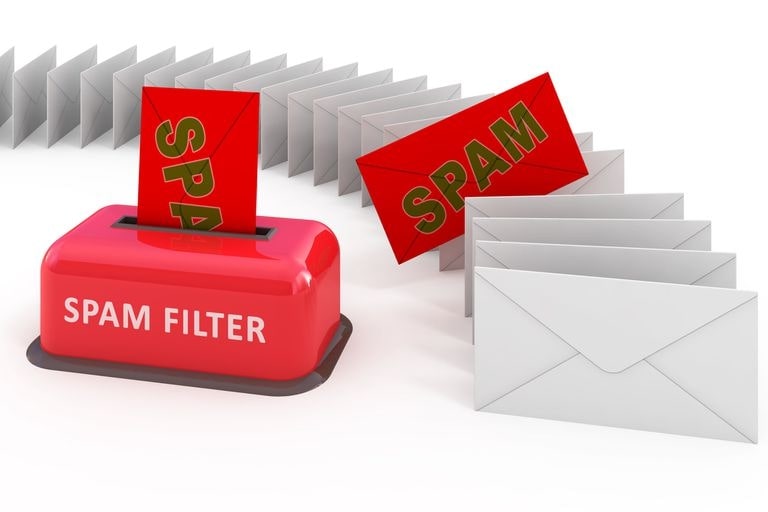10+ Best Email Marketing Tips for Avoiding Spam
If you send enough email campaigns, you will definitely encounter spam filter problems. According to ReturnPath, around 21% of permission-based emails sent by genuine email marketers wind up in spam.
Spam filters and ISPs are working harder than ever to decrease mailbox irrelevance, so it’s critical that you understand what spam is, how spam filters and firewalls function, and what actions you can take to prevent getting reported.
In this article, I will share with you some great tips you can use to prevent your emails from landing into the spam folder and how the spam filter works. Let’s jump right into the details!
How to prevent your emails being sent to the spam folder: 12 best tips

Email delivery troubles affect even the most seasoned email marketers on a regular basis. Here’s where we come in! We’re here to assist you get back into your inbox and out of the spam folder.
1. Don’t buy or rent email lists
Yes, it is legal to rent and buy lists of people who have agreed to receive commercial emails– but it is never a good idea. Not only is this an ineffective email marketing approach that violates your email service provider’s Terms of Service, but these people don’t know you and are unlikely to want your emails. To put it another way, there’s a good chance they’ll mark you as spam. Furthermore, let’s be honest: high-quality email addresses are never for sale.
2. Don’t use spam trigger words
One of the simplest strategies to avoid spam filters is to carefully select the phrases in your email’s subject line. A fair rule of thumb is: if it sounds like something a used car salesman would say, it’s most likely a spam trigger word. Consider the terms “free,” “guarantee,” “no obligation,” and so on.
3. Keep your email lists current and clean
Even if your list is fully composed of genuine opt-ins, if you do not conduct regular email hygiene, you risk being labeled a “spammer” Why? Due to the fact that internet service providers (ISPs) base complaint rates on active subscribers rather than total users.
Expired email addresses can also become SPAM traps, which means that even if you obtained emails legitimately, the abandoned addresses that haven’t been used in years may have evolved into spam traps. Even one spam trap hit can cause deliverability issues.
Expired email addresses can also be used to identify unknown users (bounces). If you hit unfamiliar accounts at a rate more than 5%, ISPs will perceive you as someone with poor email hygiene. What was the end result? They will make it more difficult for your emails to reach people’s inboxes, and your general sender reputation will undoubtedly suffer as a result, making it even more difficult to reach people’s inboxes.
By keeping your email lists up to date and clean, you can reduce the probability that individuals will mark your emails as spam. Inactive subscribers and expired email addresses can be identified using analytics like opens, clicks, and website activity.
4. Use double opt-in
After a prospect subscribes to your email list, you can send them a follow-up email with a confirmation link to ensure they genuinely want to receive emails from you.
People who have to confirm that they want email messages from your company are more likely to read and engage with the emails they get. Your email lists will be considerably more qualified and your subscribers will be much more engaged if you employ double opt-in.

5. Provide a clear unsubscribe link and a physical mailing address in your email footer
Enabling people to unsubscribe is essential for list cleanliness since anyone receiving your emails should desire to receive them; otherwise, you’re just spamming them. But did you know that it violates laws in many countries, including the United States, to not provide an easy method for your recipients to unsubscribe?
You must provide a method for people to unsubscribe from your email list in your marketing emails, either by sending a reply email or by going no more than one level down to reach a page where they can unsubscribe. It is absolutely up to you the strategy you use, as long as the information is clear and easy to find.
What you should do here is include a link to adjust subscriber preferences in addition to the unsubscribe link, so that your subscribers can unsubscribe from only one sort of email rather than all of them.
6. Remove unsubscribes from your email list
If a subscriber unsubscribes, they must be removed from your email list. It’s the law. Don’t try to keep them because they will mark your email as spam anyway in your next email. That means you risk violating spam laws and lose a subscriber at the same time, so why don’t just let them go in the first place?
7. Don’t use video, Flash, or JavaScript in your email
Most email clients do not allow the viewing of rich media such as Flash or video embeds by default. Use a picture of your video player (with a play button) that connects to the rich media on a website page instead.
Even if a spam filter permits your email through, most email clients will not allow JavaScript or other dynamic scripts to display, so avoid using them entirely.

8. Use a familiar sender name
Because email users these days are bombarded with SPAM, they are hesitant to read emails from unknown senders. By adding your brand name, you can ensure that recipients recognize you as the sender. Send the email from a genuine person if possible. A personalized sender name and email address are more likely to be trusted by recipients than a generic one.
9. Maintain the reputation of your sender’s IP address
The reputation of your IP address has a big impact on the delivery of your emails. If you send email from an IP address with a bad reputation, your emails are considerably less likely to get in the inboxes of the recipients. DNSstuff.com allows you to see if you are a blacklisted sender, something many unlucky email marketers aren’t even aware of.
10. Always stay updated with changes in email laws, ISP behavior, and spam filter technology.
Email marketing is continually changing, and staying up to date ensures you’re always following best practices – and the law. Responsible and reputable email marketers read up on email sending legislation, ISP behavior, and spam filter technologies on a regular basis.
11. Send relevant content
A commitment to deliver relevant, fascinating information to your recipients is at the heart of any effective email program. This entails being deliberate about your sending habits and not simply sending for the sake of sending. Aimless messaging can reduce engagement, which is the last thing we want. The emails you send should strike a chord with your receivers; otherwise, you risk being ignored—or worse, being routed to spam.
Before you push send on your next email, consider the following:
- Is the information I’m sending out new, urgent, or relevant?
- Have I recently provided an update on this subject? Is it too soon for another update?
- Is it necessary for all of my subscribers to be aware of this information? Should I instead update a subset of my list?
- As a recipient, would I find this email useful?
Finding out what email content works best for your brand is frequently a matter of trial and error, so you should try new things and experiment with different styles of copy as you know more about your audience.
12. Use spam checkers

Spam checkers are online software that allows you to test your emails and determine their likelihood of being labelled as spam. Although ISPs have the final say when it comes to how messages are screened, spam checkers can often give senders peace of mind as they plan new campaigns.
Mail-Tester.com
When someone visits Mail-Tester.com, they will see a treehouse with an auto-generated email address that changes each time they visit the site. You can send an email to the provided address, then click “Check Your Score.” Mail-Tester will then provide you with a free email deliverability score based on the email sent to the specific email address.
The software will examine the message’s text, as well as your mail server and IP address, to determine if there are any deliverability difficulties. The report is available to free users for seven days. You can also sign up for unlimited email testing and reports that will last for 30 days.
Mailtrap.io
Mailtrap is an email testing application that lets you execute many email tests in a secure testing environment. It saves your test emails and allows you to analyse and debug your templates. With Mailtrap, all of your email tests are neatly grouped in one location and cannot be accidentally forwarded to real subscribers.
Each email collected in the Mailtrap inbox receives a spam score as well as a thorough description of the variables influencing the result. The higher the score is, the more likely an email will reach the recipient’s inbox.
You can also use Mailtrap to see if your domain is on any common blacklists. If this is the case, you should address it before launching the next campaign. This tool can also assist you in validating your template’s HTML and CSS properties to avoid rendering errors.
Spamcheck
Spamcheck is a simple and free software that enables you to paste a plain text message into a text field and evaluate it for any language that can cause spam filtering to kick in.
After you enter the content and click “Check your score,” the software will assign you a score out of 10 depending on what is and isn’t included in the email body.
How the spam filter works

Spam filters use a large number of criteria to determine an email’s “spamminess,” with the purpose of minimizing spam. They will weigh each aspect of the spam you get or send and total them up to produce a spam score, which will help determine whether or not a campaign will pass the filter. If the score reaches a specific threshold, your email will be marked as spam and will be routed to the spam folder.
However, each spam filter works a little differently, and “passing” ratings are often set by individual server operators. This means that an email may pass through Spam Filter A without being flagged, but it may be flagged by Spam Filter B.
The list of spammy criteria is continually changing and adjusting, based, at least in part, on what individuals designate as spam in their email by clicking the “Mark as spam” or “This is spam” button. Spam filters even communicate with one another to relay what they’ve discovered. There is no secret formula, and spam filters do not share information about their filtering procedures, but there are actions you can take to avoid getting in your users’ spam mail folders.
Campaign metadata: Spam filters want to know if you know the person who is getting the email. We propose personalizing the To: field of your campaign with merge tags, sending through verified domains, and requesting recipients to add you to their address book.
Your Internet Protocol (IP) address: Some spam filters will flag a campaign if somebody with the same IP address has previously submitted spam.
Including coding in your campaign: Spam filters can be triggered by erroneous code, additional tags, or code imported from Microsoft Word.
Text and formatting: While some spam filters will reject emails based on certain content or graphics, there is no all-encompassing set of best practices to follow or items to avoid. However, we do have a few suggestions:
- Create a campaign that is clear, balanced, and encourages involvement from your subscribers.
- Check to see if your subscribers have agreed to receive your emails.
- Maintain consistency. Try not to deviate too much from the information and design that your audience is already familiar with via your brand, website, or social media networks.
- Testing can be used to determine how modifications to your content affect delivery and engagement.
Final words
That’s it! I hope this article has provided you with valuable information to keep your emails from landing in the spam folder. Please feel free to leave comments below for further discussion on this topic!
New Posts






